Table of Contents
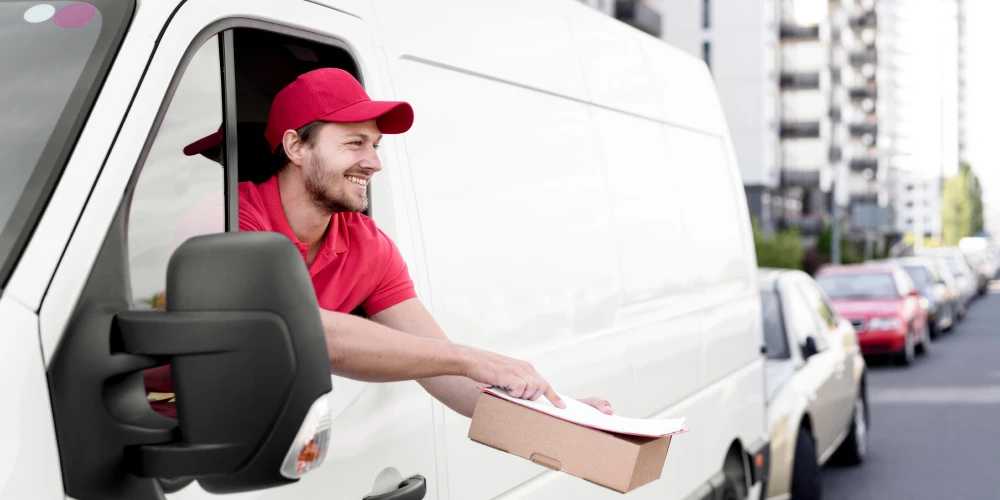
Planning a delivery route transcends plotting points on a map. Leveraging a thorough understanding of delivery route planning and the meticulous orchestration of logistical components such as traffic patterns, delivery windows, and cargo specifics translates directly to heightened driver efficiency and the likelihood of successful deliveries. By optimizing each journey’s distance and time, businesses minimize operating costs while maximizing customer satisfaction. The quintessence of this planning lies in integrating technology and real-world considerations, resulting in a dynamic workflow tailored for the fast-paced delivery ecosystem.
The Role of Route Optimization in Your Business
Mastering route optimization can elevate efficiency across numerous operational facets of your business. When delivery routes are optimized, the precision in time management is remarkable, propelling punctuality and discernible cost-effectiveness. Human and vehicular resources are leveraged to their fullest potential, curbing reduced unnecessary expenditures and enhancing the productivity of your fleet.
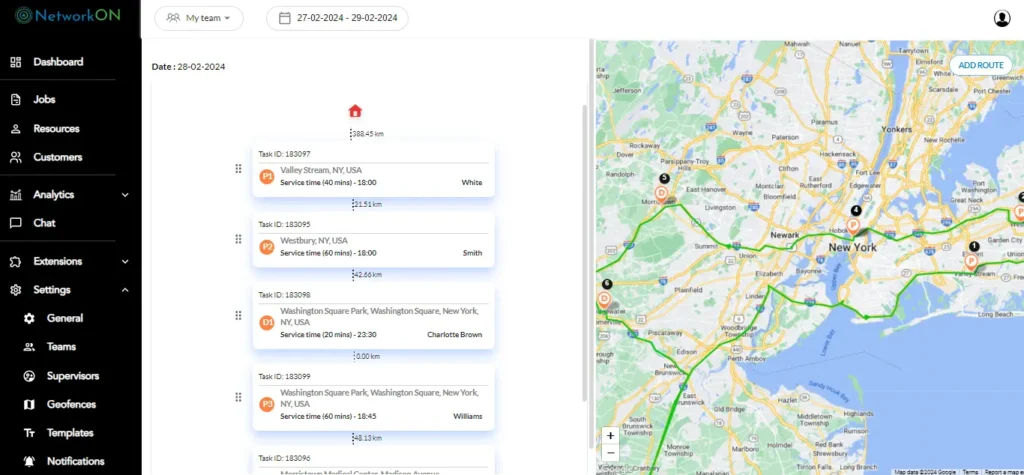
Route optimization does more than sharpen logistics; it systematically refines the entire structure of a business’s operation. Efficient routes confer a domino effect of benefits, amplifying customer satisfaction and the potential for escalated business growth. Firms embracing these optimized pathways witness a tangible reinforcement of their service delivery capabilities and, ultimately, a fortified market position.
- Time saved on the road translates directly into more daily deliveries and a shortened order-to-delivery cycle.
- Cost reductions manifest through lower fuel consumption, reduced vehicle wear and tear, and minimized overtime expenses.
- Resource management is enriched as drivers and vehicles strategically deploy, producing a lean and agile delivery operation.
Exploring Route Planning Software for E-commerce
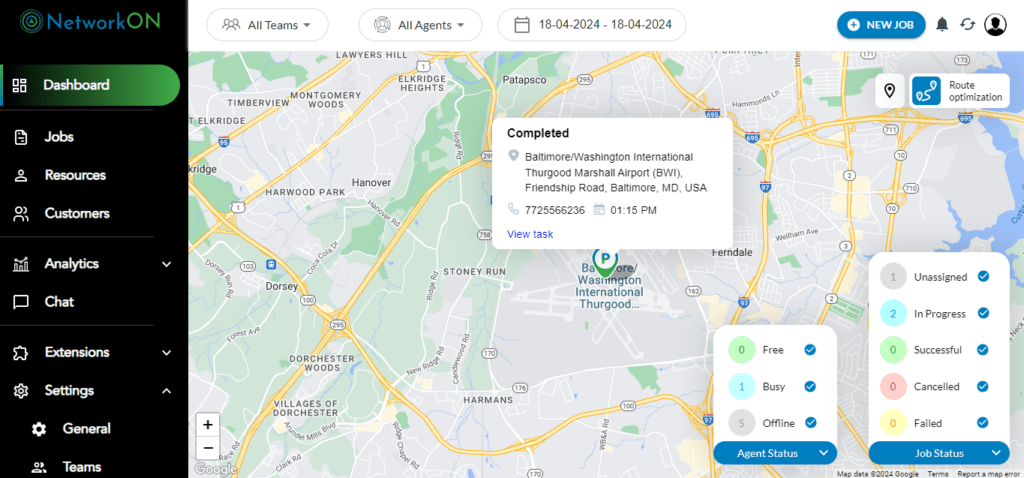
Dynamic routing software is a cornerstone in the evolution of e-commerce, demonstrating a marked increase in efficiency for businesses that integrate it into their operations. E-commerce players unlock new potential for enhanced route decisions and driver guidance by developing a keen understanding of how this advanced technology works. Modern route planning software solutions’ seamless speed and precision combination directly translates into tangible business benefits.
Quick Overview of the Power of Dynamic Routing Software
The arrival of dynamic routing software revolutionized delivery management, allowing users to process vast amounts of data in real-time to determine the most efficient delivery paths. Unlike static routes, which remain unchanged, dynamic routing adjusts to new orders, traffic conditions, and even customer preferences. This flexibility ensures a continual improvement cycle within delivery routes and timetables.
Last-Mile Delivery: The Fulcrum of Customer Satisfaction
As e-commerce volumes surge, the final leg of a product’s journey, the last-mile delivery, anchors the customer’s retail experience. Marginal delays or slips in this phase lead to ripples of discontent. Conversely, deliveries that meet or surpass expectations directly bolster customer satisfaction.
Challenges and Solutions for Last-Mile Delivery
Urban congestion, unpredictable traffic patterns, and high expectations stress last-mile operations. Optimized routing algorithms are practical solutions that dynamically adjust to real-time traffic updates to establish cost-efficient pathways to delivery points. Equally, incorporating local knowledge of drivers through feedback loops refines route accuracy over time.
To elaborate, diversifying delivery fleets, including electric bicycles and scooters, can deftly maneuver through congested cityscapes. This strategy often shortens delivery timeframes while contributing to a greener footprint.
Strategies to Ensure Delivery Speed and Customer Happiness
Accuracy in delivery windows pairs with delivery speed as a benchmark for excellence. Utilization of intelligent dispatch systems ensures that the right parcels are assigned to the most suitable couriers, accounting for current location and cargo capacity. This efficiency maximizes both resource allocation and customer contentment.
Moreover, a seamless communication chain between the retailer, courier, and end consumer affords a degree of transparency. Customers are kept in the loop, making the delivery wait less opaque. Customer-facing interfaces with options for delivery rescheduling or alternative drop-off points feed into a tailored delivery experience. Enhanced satisfaction is often the result of the recipient exercising control over their delivery preferences.
By addressing these strategies holistically, businesses find that focusing on last-mile delivery invites benefits. Customers share their positive delivery experiences, fostering loyalty and acquiring new clientele through word-of-mouth recommendations. Thus, companies that invest in last-mile efficiency engage in an instrumental practice for sustainable growth.
Real-Time Package Tracking: Transforming the Customer Experience
Integrating real-time package tracking systems elevates transparency and reinforces customer confidence. Customers receive instant updates on the whereabouts of their orders, creating a communication channel that keeps them informed throughout the delivery process. This transparency is not merely about providing information; it fosters a sense of reliability and trust between the customer and the brand.
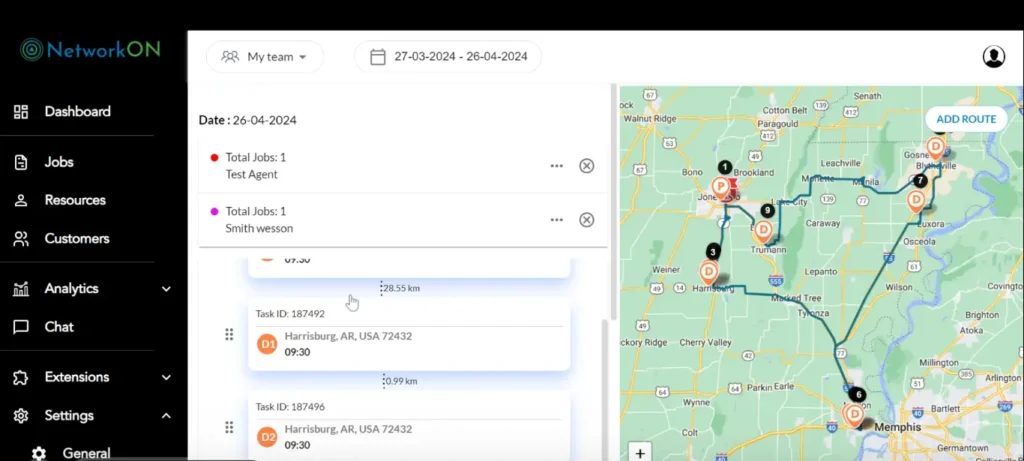
Furthermore, tracking systems directly influence customer service and satisfaction levels. The ability to monitor a delivery’s progress mitigates anxiety and uncertainty, often resulting in reduced customer service inquiries. When customers have immediate access to their package’s status, the perceived value of the service increases, leading to a higher likelihood of repeat purchases and positive word-of-mouth.
- Customers favor businesses that provide complete visibility into their shipment’s journey.
- Real-time updates can decrease the volume of customer service calls related to order statuses.
- Detailed package tracking can lead to improved customer retention and brand loyalty.
Enhanced Accuracy in Real-Time Tracking
Advancements in technology ensure that the information provided is not just real-time but also remarkably accurate. Sophisticated algorithms calculate estimated arrival times, considering traffic patterns, weather, and delivery schedules. This precise data lets customers confidently plan their day, knowing when to expect their package.
Ultimately, the modern e-commerce landscape considers real-time package tracking an added benefit and a standard customer expectation. Meeting this expectation can significantly elevate customer satisfaction and set a business apart from its competitors. Consequently, investment in robust package tracking technology directly contributes to a stronger, more resilient customer relationship.
Addressing Traffic Congestion Avoidance for Faster Deliveries
Efficiently navigating through dense traffic ensures timely deliveries, aligning with customer expectations for prompt service. Delivery drivers with knowledge and tools that enable proactive responses to traffic conditions have an edge as they maintain schedules despite congestion.
Techniques to Navigate and Mitigate Traffic Delays
Harnessing various strategies allows delivery drivers to circumvent congested areas. One such method is to schedule deliveries during off-peak hours, leveraging historical traffic data. Another is to be aware of the impact of weather, events, and road works on traffic patterns, planning routes around these potential delays.
Tools and Technologies that Assist in Avoiding Congestion
Today’s technological landscape offers numerous solutions to traffic challenges. Real-time GPS navigation systems are leveraged to provide drivers with the most efficient routes, adapting to traffic conditions dynamically. These tools incorporate data analytics and crowd-sourced traffic information to forecast delays and suggest alternative pathways.
- Navigation apps like Waze offer user-reported traffic updates, rerouting drivers around congested paths.
- Telematics technology in a fleet management system enables dispatchers to monitor vehicle locations and traffic in real-time and guide drivers accordingly.
- Advanced Route Optimization software factors in real-time traffic data, ensuring that the delivery routes planned are as efficient as possible.
Drivers who adeptly use these technologies ensure faster delivery times, contributing to the overall efficiency of delivery operations.
Strategies for Effective Delivery Fleet Management
Optimizing the performance of a delivery fleet goes beyond simple vehicle maintenance. Regular fleet strategy reviews align with overarching organizational goals. Management best practices entail ongoing evaluation of route planning, technology integration, and driver training programs.
Best Practices for Maintaining and Deploying a Delivery Fleet
Regular maintenance schedules preempt mechanical failures and extend vehicle lifespan. Advanced Deployment strategies leverage data analytics to assign the right vehicle types for specific routes, balancing load capacity with fuel efficiency. Comprehensive training for drivers enhances safety standards and maximizes fleet efficiency.
Incorporating Eco-Friendly Routing to Promote Sustainability
Sustainability in Fleet Management transcends regulatory compliance. Routes designed to reduce fuel consumption minimize carbon footprints. The selection of vehicles with alternative fuel options embodies an organization’s commitment to environmental stewardship. Employing electric or hybrid vehicles where feasible contributes to eco-friendly corporate practices.
- Monitoring fuel consumption highlights areas for improvement.
- Choosing the shortest, most efficient routes reduces environmental impact.
- Investing in eco-friendly vehicles supports long-term sustainability goals.
Ensuring Accurate Delivery Time Estimation
Accurate delivery time estimations uphold the integrity of customer service by managing expectations and fostering trust in delivery services. A realistic portrayal of when a package will arrive bolsters customer satisfaction and minimizes customer service inquiries regarding order status.
Setting Realistic Customer Expectations
To set a standard for reliability, delivery services must ensure delivery time predictions are grounded in reality. Distance, package volume, current traffic conditions, and weather must be weighed carefully. Such forecasts allow customers to plan accordingly, reducing the likelihood of dissatisfaction resulting from unmet expectations.
Methods to Predict and Communicate Delivery Times
Advanced algorithms integrated into modern route planning software are geared to predict delivery times with greater accuracy. By analyzing historical data and real-time input, these tools can anticipate the duration of each segment of a delivery route. Once the calculation is complete, automated email or SMS update communication informs customers about the expected delivery window.
- An integrated approach utilizing GPS tracking tools allows for adjustments in estimation as real-time variables change.
- Customer-facing interfaces, such as user dashboards, provide live updates, enhancing transparency.
- Data-driven machine Learning models refine prediction algorithms over time, enhancing future estimations’ precision.
Through meticulous planning and sophisticated forecasting tools, delivery services can confidently assure customers of the punctuality of their orders.
Reducing Costs Through Smart Delivery Planning
Smart delivery planning is a decisive factor in shrinking operational expenses. When executed proficiently, optimizing delivery routes results in considerable fuel savings, enhances driver productivity, and minimizes vehicle wear and tear. By curtailing the time spent on the road, companies save on direct costs and unlock the potential for additional deliveries within the same timeframe.
Impacts of Delivery Planning on Cost Reduction Strategies
Effective delivery planning catalyzes operational cost-cutting measures. Businesses that harness sophisticated routing algorithms can ascertain the most efficient pathways for their fleets. Reduced mileage and improved fuel efficiency consequently lead to a lower carbon footprint and can also foster goodwill among eco-conscious consumers.
Analyzing the Cost Benefits of Optimized Routing
- Optimized routing drastically reduces unnecessary mileage, directly decreasing fuel costs.
- Focused dispatching increases the number of deliveries per route, effectively boosting revenue possibilities.
- Time savings are realized through intelligent routing, which frees drivers to complete more tasks and elevates productivity.
- Wear and tear on vehicles diminish with shorter routes, leading to lower maintenance costs and extended vehicle life.
- Smarter routing can improve traffic maneuverability, lessening the likelihood of delays and overtime expenses.
Unlocking the Benefits of Proof of Delivery in E-commerce
Completing a successful e-commerce transaction hinges on the exchange of goods and the confirmation thereof. Proof of Delivery (POD) serves as this tangible acknowledgment, establishing that the customer has received their parcel as intended.
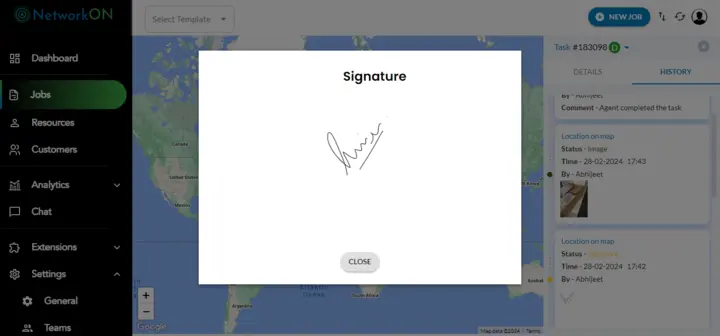
With the residues of lingering doubts, the moment delivery is finalized with a POD, trust cements between vendor and buyer, fostering a mutual understanding that the contractual obligation has been fulfilled.
Understanding POD and Its Fundamental Role
Proof of Delivery is not just a piece of a digital notice; it is a keystone in the arch of the transaction process. As a document or electronic record, POD details include the recipient’s signature, the exact delivery time, and often a note of the goods’ condition. In the case of a contention or a claim regarding the delivery, the POD transforms into the cornerstone piece of evidence that clarifies the situation.
Digital vs. Physical Proof of Delivery
The evolution of technology has ushered in a new era where digital POD systems are replacing traditional paper-based methods. Digital solutions offer enhanced security, as they are less susceptible to damage or loss and are always accessible via secure platforms. Each entry is date and time-stamped, indexing an authentic and indisputable transaction sequence. Conversely, while still in use, physical documents bear the risk of being misplaced or illegible, thus potentially compromising the integrity of the delivery confirmation.
- Digital POD: Offers immediate confirmation, enabling quicker billing and payment processing. Customers can sign directly on a device, capturing their acknowledgment instantaneously within the system.
- Physical POD: Presents a hard copy that requires manual handling, which can introduce delays in processing and potential errors in archiving. Still, it signifies a trusted and familiar method for some organizations and situations.
Incorporating Proof of Delivery into the e-commerce framework strengthens operational reliability and heightens customer satisfaction by assuring them of a transparent and accountable delivery process. Digital or physical, a business’s choice of POD method will depend on its logistics, the nature of the goods transported, and customer preferences.
Deploying Machine Learning for Predictive Analytics in Deliveries
As digital networks continually adapt to meet delivery demands, machine learning emerges as an indispensable component for achieving higher predictability. Through assimilating vast datasets, machine learning algorithms deduce patterns indispensable for preempting potential delivery issues. Let’s delve into the transformative power of these technologies within the logistics sector.
Refining Predictive Models with Extensive Delivery Data
Immense quantities of data lay the groundwork for robust predictive models within delivery networks. Machine life can accurately predict delays by training these models with historical data, including weather patterns, traffic conditions, and delivery outcomes. These forecasts enable businesses to proactively manage resources, ensuring the resilience of their supply chains against unforeseen disruptions.
Furthermore, predictive analytics embolden businesses to inform customers about potential delays proactively, fostering transparency and maintaining trust. Integrating machine learning into delivery systems is not merely a futuristic premise but a present-day necessity, with substantial benefits crystallizing from its application.
Courier Management Systems: A Tool for Efficient Deliveries
Courier Management Systems (CMS) streamline the complex process of managing and tracking parcel delivery operations. Such systems are fundamental in automating messenger task dispatch processes and providing customers transparency regarding their shipments.
Overview of Courier Management and Its Functionality
At the core of a CMS lies a framework designed to simplify the coordination of delivery elements. This includes allocating delivery jobs, tracking driver locations, optimizing routes, and collecting electronic proof of delivery. Moreover, these systems facilitate workload management, reporting, and customer service handling, all within one integrated interface.
Integration with Route Planning for Seamless Operation
Integration with route planning tools enhances a CMS by ensuring the sequential delivery of packages. This synergy allows for calculating the most efficient pathways, accounting for variables such as traffic patterns, package priorities, and time constraints. Consequently, this results in quicker deliveries and lower operational costs while maintaining high service standards by delivering parcels within the promised time frames.
Advanced CMS platforms may also aggregate data to refine their route-planning capabilities. They draw on historical performance, traffic trends, and delivery outcomes to enhance future planning. Integration with real-time tracking systems enables dispatchers to adapt to changes on the ground, ensuring that the CMS provides dynamic, responsive support for the courier network.
Employing a CMS fosters better resource allocation, reducing idle times for couriers and vehicles alike. By managing deliveries more effectively, courier businesses can scale their operations, accommodate growing demand, and increase customer satisfaction without a proportional increase in administrative workload or resources.
- Allocate deliveries with precision using geolocation and address data
- Track courier progress in real-time for up-to-the-minute delivery statuses
- Optimize delivery routes to minimize delays and fuel consumption
- Analyze performance data to identify areas for operational enhancement
- Facilitate direct communication channels between couriers and dispatch
Mastering E-commerce Order Fulfillment
Order fulfillment in e-commerce demands precision, agility, and strategic coordination. Automated systems and finely tuned processes lie at its heart, propelling businesses ahead in a marketplace where speed translates into competitive advantage. Establishing a seamless integration between fulfillment operations and optimized delivery routes ensures parcels transit from warehouse shelves to customers’ doorsteps both timely and efficiently.
Processes and Automation in Order Fulfillment
Automation in order fulfillment encompasses various functions, from inventory control to picking and packing workflows. By utilizing sophisticated software, e-commerce businesses automate repetitive tasks, reduce human error, and accelerate the fulfillment process. For instance, warehouse management systems (WMS) dynamically organize inventory data, resulting in minimized picking errors and streamlined stock management.
Linking Fulfillment Efficiency with Optimized Delivery Routes
There is a direct correlation between the meticulous organization of fulfillment operations and the development of optimized delivery routes. Integrating route planning software within the fulfillment system facilitates the dispatch of packages following the most efficient paths, considering factors such as distance, parcel volume, and driver availability.
The effectiveness of such integration facilitates a swift transition of goods through fulfillment stages, ensuring orders board the correct delivery vehicles bound for destinations along carefully planned routes.
Ultimately, the synchronization between order fulfillment and route optimization technologies increases delivery speeds and underpins robust cost management strategies, ultimately enhancing the customer experience.
Those responsible for managing e-commerce logistics recognize that the finesse with which they handle order fulfillment extends into every subsequent step of the delivery chain. Through established processes and leveraging technology, companies remain well-positioned to meet the evolving demands of the digital marketplace.
Multi-Stop Route Planning for Cost-Efficient Deliveries
Optimizing multi-stop delivery routes ensures drivers cover the least distance while making the maximum number of deliveries. This efficiency reduces fuel costs, vehicle wear and tear, and overtime for delivery personnel. Integrating sophisticated algorithms within a route planning system can streamline the generation of these optimized paths, accounting for variables such as delivery time windows, vehicle capacity, and real-time traffic conditions.
Planning Multi-Stop Routes for Driver Efficiency
Drivers with multiple deliveries benefit from predefined routes pinpointing each location’s shortest and fastest paths. By minimizing unnecessary mileage, companies profit from reduced operational costs and increased deliveries per route. Furthermore, when drivers traverse less distance, they are less likely to encounter traffic congestion, leading to more reliable delivery times.
Techniques to Ensure Timely Deliveries Across Multiple Stops
Delivering timeliness depends not solely on the route taken; strategic loading and unloading practices also play a role. By organizing packages within the vehicle according to the delivery sequence, drivers can minimize the time spent at each stop. The use of GPS technology aids in anticipating and circumventing potential delays, ensuring that each package reaches its destination when promised. With real-time tracking, dispatchers can adjust routes on the fly, offering adaptive solutions to unforeseen road conditions or customer requests.
- Effective route optimization considers the order of stops and the expected duration at each location, producing an accurate schedule for the day’s deliveries.
- Dynamic rerouting capabilities facilitate the swift adaptation to changes, preserving punctuality despite disruptions.
- Communication between driver and dispatcher, informed by comprehensive route analytics, allows for incremental improvements that bolster overall system efficiency.
Adapting Delivery Operations to Meet Peak Season Volume
Businesses experiencing an upsurge in orders during peak seasons face the challenge of scaling delivery operations. Recognizing shifts and meticulously planning prevents bottlenecks and maintains service quality. Delivery teams must be prepared to handle volume increments efficiently; therefore, ensuring infrastructure and processes are responsive and scalable is non-negotiable.
Preparing for Increased Volume During Peak Seasons
Forecasting for peak seasons involves analyzing historical data to predict order volume increases. This enables logistics managers to devise strategies tailored to expected demand. Inventory levels require adjustment to meet the anticipated influx of orders, and additional staff may need to be recruited to facilitate product processing, packaging, and delivery.
Fleet capabilities should correspondingly be evaluated and expanded if necessary. Larger or additional transport vehicles may be procured to accommodate more deliveries. Furthermore, temporary warehousing space might be sought so that stock can be closer to delivery areas, slashing transit times.
Ensuring Scalability and Responsiveness in Delivery Operations
Scalability within delivery operations hinges on the flexibility of the delivery fleet and staff. Scaling up and down should occur seamlessly as demand fluctuates. Training temporary staff and ensuring they are as adept as permanent team members ensure consistency in service delivery. Regular communication and real-time data sharing equip all staff to respond effectively to on-ground situations and adapt routes accordingly.
Technological integrations also play a significant part. Upgrading or implementing advanced route planning software adjusts to the dynamic challenges of peak seasons. These systems provide real-time insights and swift rerouting capabilities to avoid unexpected delays, thus ensuring timely deliveries. Enhanced tracking mechanisms grant customers visibility, fostering trust and enhancing the overall experience.
- Adopting more powerful route optimization tools adjusts delivery routes dynamically, acknowledging real-time traffic conditions and last-minute order changes.
- Clear communication channels between warehouse personnel, delivery teams, and customer service representatives streamline operations and minimize errors.
- Utilizing predictive analytics fine-tunes stocking and routing procedures ahead of time, pre-emptively addressing potential disruptions.
Through keen preparation and the deployment of sophisticated technology, businesses can scale their delivery operations for peak season demands. Anticipating increased order volumes and instituting appropriate measures in advance transforms potential challenges into seamless operations that meet customer expectations.
Key Takeaways
Efficiency Through Optimization: Route planning isn’t just about maps; it’s about optimizing every delivery aspect to reduce costs and increase customer satisfaction.
Technology Drives Efficiency: Dynamic routing software and real-time tracking are crucial for enhancing delivery efficiency and customer experience.
Last-Mile Delivery Is Critical: The final stretch significantly impacts customer satisfaction; optimizing last-mile routes and using diverse delivery methods can improve outcomes.
Cost Reduction and Sustainability: Smart planning reduces costs through fuel savings and reduced vehicle wear and supports eco-friendly practices.
Operational Scalability: Scalable operations during peak seasons require predictive analytics, flexible route planning, and efficient resource management.
Conclusion
Digital commerce thrives on efficiency and customer satisfaction, both converging at the pinnacle of delivery route mastery. The intricacies of route planning ensure that packages reach consumers posthaste, reinforcing trust and encouraging repeat business. Route optimization is the linchpin of a modern logistics strategy, trimming operational costs while catapulting service quality. As consumers, real-time package tracking signifies more than convenience; it underscores a commitment to service transparency.
Merchants confronting the labyrinth of urban traffic seek technologies that circumvent congestion, promising the swift arrival of goods. Similarly, implementing advanced fleet management strategies cultivates a robust distribution network indispensable for satisfying time-sensitive delivery expectations. Succinct delivery times not only appease customers but also serve as a metric for operational efficiency. Furthermore, utilizing proof of delivery mechanisms cements the security and accountability of transactions.
Address accuracy appliances and machine learning prognostics are armor against logistical mishaps, pivoting swiftly to subdue delivery exceptions. Harmoniously, courier management systems emerge as the quintessential aid for dispatchers orchestrating the ballet of e-commerce delivery. Amid evolving market dynamics, contactless and multi-stop delivery options adapt to ever-shifting consumer preferences and safety protocols. To thrive, particularly when scaling for peak season demands, flexible and adaptive delivery operations are not merely beneficial; they are necessary.
Unlock competitive advantage in e-commerce with NetworkON’s advanced delivery routing solutions. Our state-of-the-art software ensures optimized routes, reducing delivery times and enhancing scalability. Explore a demo today to see how we drive transformative efficiency in online commerce logistics.
Frequently Asked Questions
What is route optimization in delivery logistics?
Route optimization involves using advanced algorithms to determine the most efficient delivery paths. It considers traffic conditions, delivery windows, and vehicle capacity to minimize costs and maximize efficiency.
How does real-time package tracking benefit customers?
Real-time package tracking provides customers with immediate updates on their order’s location and estimated delivery time. This transparency reduces uncertainty, enhances trust, and allows customers to plan around their deliveries more effectively.
Why is last-mile delivery so important in e-commerce?
Last-mile delivery represents the delivery process’s final and often most critical leg. It directly impacts customer satisfaction as it’s the last touchpoint with the customer. Efficient last-mile operations ensure timely deliveries, reduce costs, and enhance overall service quality.
What are the benefits of using proof of delivery (POD) systems?
Whether digital or physical, proof of delivery systems confirms that the customer has received goods. This documentation enhances transparency, reduces disputes, accelerates payment processing, and reinforces trust between businesses and customers.
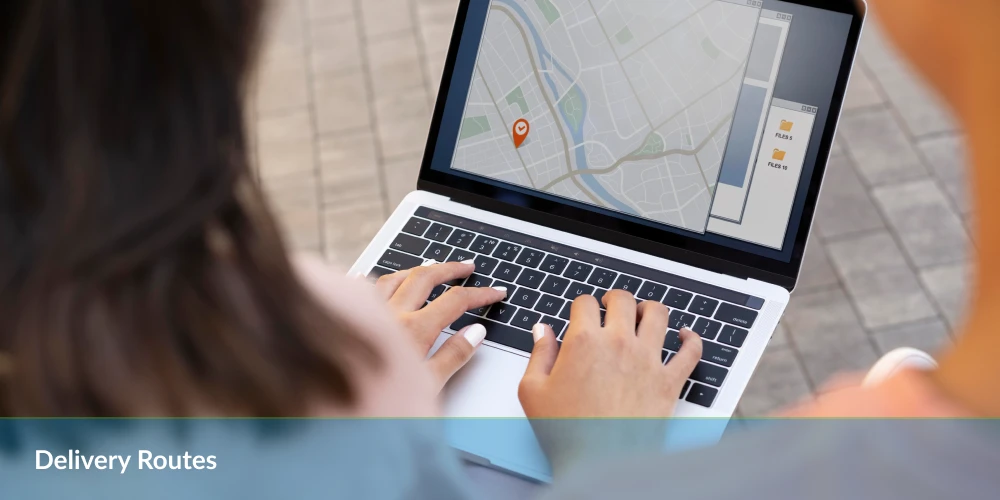



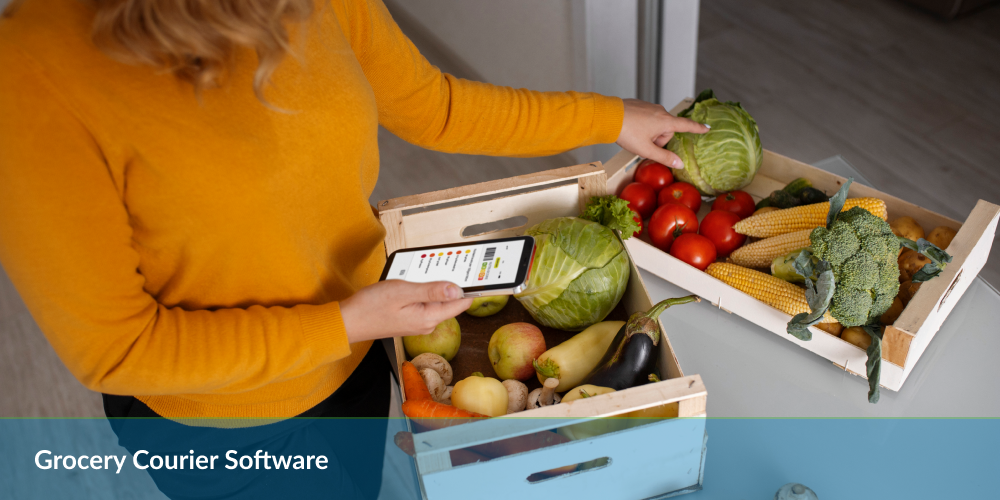
0 Conversations